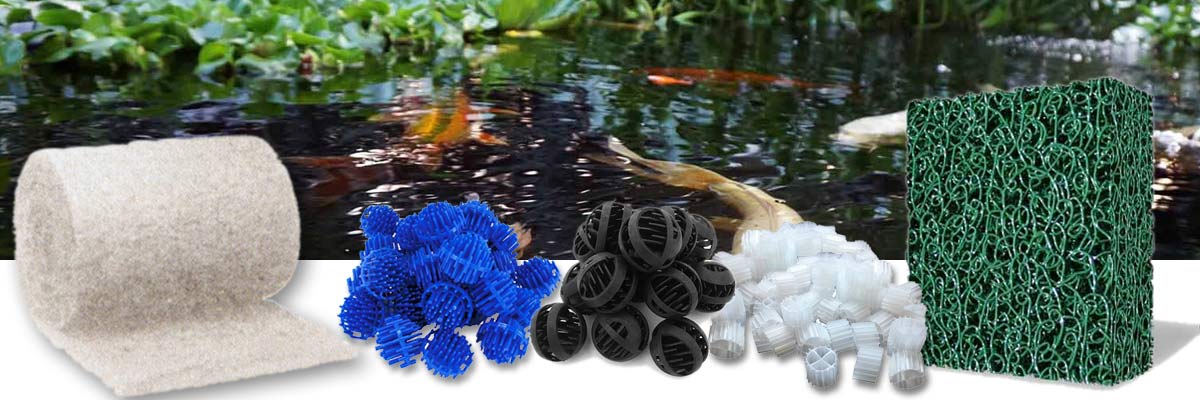Do you think your pond filter is too small? Do your fish have recurring health problems? Is your pond water clarity not very good? Chances are your pond filtration is not adequate, but that doesn’t necessarily mean you have to buy a new filter. If you have limited space or a limited budget, or you just want to get the most from your existing filter, keep reading to find out some simple techniques you can use to get the most out of your filter.

Here are the bare bones basics that every pond owner should know about pond filtration. For more information on filtration see our Filtration Advice page.
There are 3 types of pond filtration – biological, mechanical and chemical filtration. If you have fish in your pond the most important type of filtration is biological (bio-filtration), and that is what will be discussed in this article.
In a nutshell, biological filtration is the process where beneficial bacteria break down harmful products (Ammonia) that come from fish waste and decaying plant matter and convert them into much less harmful products (Nitrate).
These beneficial bacteria live anywhere in your pond where there is:
Good pond filters are designed to provide these two basics – flowing water provided by your pump, and surface area provided by filter media such as sponges, lava rock, filter pads etc. The more surface area a filter has – the more bacteria it can support – which results in better water quality.
External box filters, waterfall filters and pond skimmers are very popular types of filters. Many of these types of filters come with only a minimum amount of filter media, and they have extra room inside the filter chamber that can be put to better use to increase the bio-filtering capacity of the filter.
If you have available room in your filter, add additional filter media. Filter pads, bio balls, Moving Bed Filter Media (K1) and Grey (or Blue) Matala Filter Media are all great filter media with large surface area that you can add to you existing filter to increase its effectiveness. Which product you add depends on the style filter and personal preference.
Some filters don’t allow you to add more filter media. Pressurized filters or in-pond submerged filters aren’t usually designed with much empty space where you can add more media. But that doesn’t mean you still can’t increase the filtration in your pond. Bacteria aren’t that fussy where they live. As long as you provide them with the 2 basic necessities: flowing water and surface area, they will grow anywhere in the pond. Mesh bags filled with bio balls or K1 placed at the base of a waterfall, in a stream, next to your pump or even next to an air diffuser in the bottom of the pond can provide the extra filtration you need.
Increase the flow to your filter. If water is just trickling through your filter it is not likely working as effectively as it could be. Increasing the flow close to the maximum flow rate recommended by the filter manufacturer will get the best results. Ideally you want to have the volume of your pond circulating through your filter once every 1 to 2 hours
USE ONLY FISH SAFE MATERIALS. Although this seems like a ‘no brainer’, it is very important to use only fish safe or food grade materials in your pond. Although products such as furnace filters and dehumidifier pads may look like perfect filter media, they are sometimes coated with harmful chemicals to prevent mould or fungus, or they are made from material that is not fish friendly.
If you do need to buy a new filter for you pond – find the model that is recommended for your pond then buy the next size bigger. Bigger is always better in pond filtration. You can’t have too big a filter for your pond, larger filters have more surface area and they don’t have to be cleaned as often (which means less work for you). Although filters can be expensive – when compared to the cost of replacing several large koi that have died due to poor water quality – they are well worth it. Filters do come in a range of prices, generally the less expensive filter do work well, but require more work when it comes to cleaning them. Often, filters that cost a bit more have additional features that make them much easier to clean and take much less time to clean giving you more time to enjoy your pond.